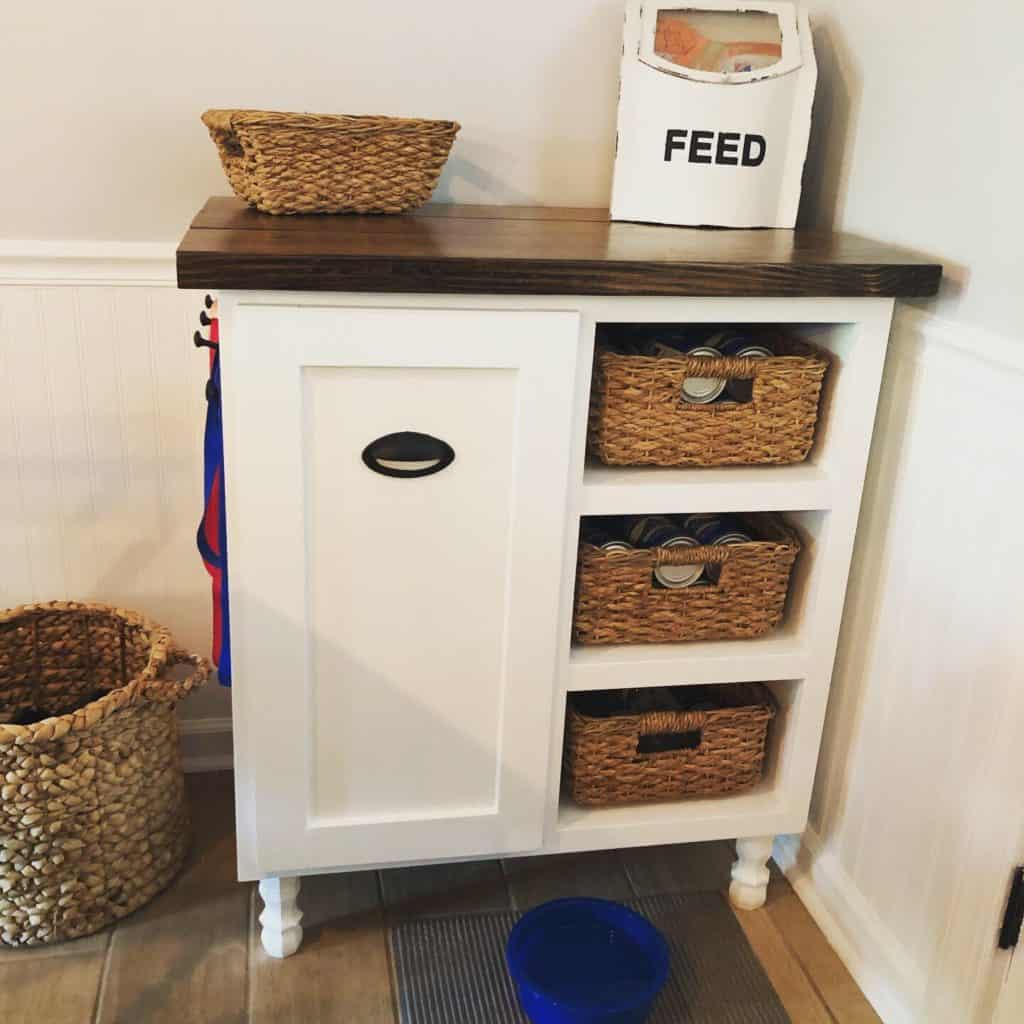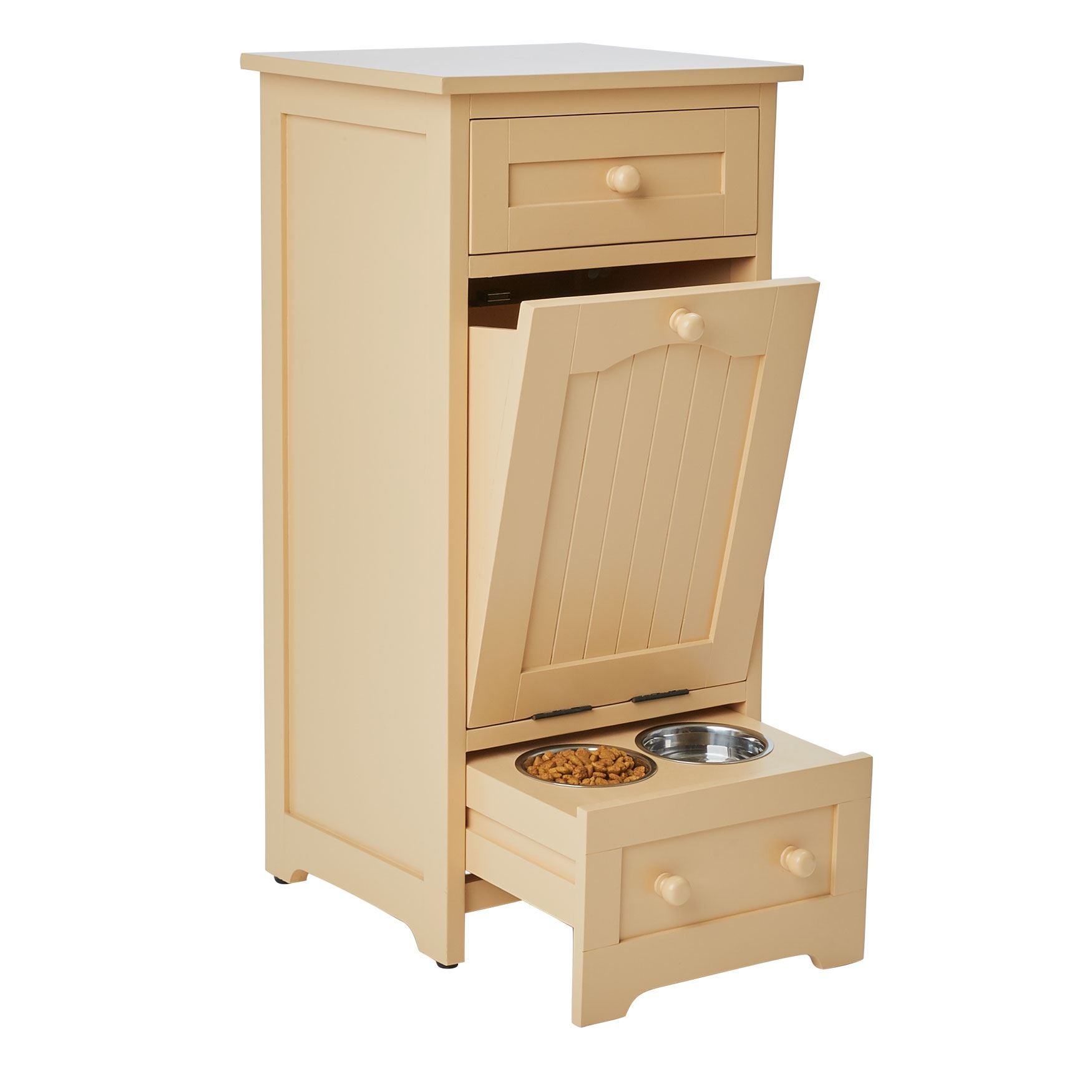The Importance of Proper Pet Food Storage

Storing pet food correctly is crucial for maintaining its quality, freshness, and safety for your furry companion. A dedicated pet food storage cabinet offers numerous benefits, ensuring your pet enjoys nutritious meals and avoids potential health risks.
Benefits of Storing Pet Food in a Dedicated Cabinet
A dedicated pet food storage cabinet provides a controlled environment, protecting your pet’s food from external factors that can compromise its quality and safety.
- Protection from Pests: Pet food is highly attractive to insects, rodents, and other pests. A dedicated cabinet with a secure seal prevents infestation, ensuring your pet’s food remains free from contaminants and unwanted critters.
- Control of Moisture and Humidity: Excess moisture can lead to spoilage and mold growth in pet food. A cabinet helps regulate humidity levels, preventing food from becoming damp and creating an environment where bacteria can thrive.
- Protection from Sunlight and Heat: Exposure to sunlight and heat can degrade the nutritional content of pet food and cause it to spoil faster. A cabinet provides a shaded and temperature-controlled environment, preserving the quality of your pet’s food.
- Organization and Convenience: A dedicated cabinet keeps pet food organized and easily accessible. This eliminates the need to search for bags in cluttered pantries or cupboards, making meal preparation quicker and more convenient.
Risks Associated with Improper Pet Food Storage
Neglecting proper pet food storage can lead to several risks, jeopardizing your pet’s health and potentially causing illness.
- Spoilage and Mold Growth: Improper storage exposes pet food to moisture, heat, and bacteria, promoting spoilage and the growth of harmful mold. Consuming spoiled food can cause digestive issues, allergies, and other health problems in pets.
- Infestation by Pests: Open bags of pet food attract insects, rodents, and other pests, which can contaminate the food with feces, parasites, and allergens. These contaminants can cause severe health problems in pets, including gastrointestinal disorders, skin allergies, and respiratory issues.
- Loss of Nutritional Value: Exposure to sunlight, heat, and moisture degrades the nutritional content of pet food, reducing its effectiveness in providing essential vitamins, minerals, and nutrients for your pet’s health.
Selecting the Right Pet Food Storage Cabinet
Choosing the right pet food storage cabinet depends on several factors, including your pet’s size, food type, and available storage space.
- Pet Size and Food Consumption: Consider the size of your pet and its daily food intake. Larger pets require more storage space, while smaller pets may need a smaller cabinet.
- Food Type: Dry food generally requires less storage space than wet food. Choose a cabinet with appropriate dimensions and features for your chosen food type.
- Storage Space Availability: Assess the available space in your kitchen or pantry before purchasing a cabinet. Measure the area and ensure the cabinet fits comfortably without obstructing other appliances or storage items.
Features to Consider When Choosing a Pet Food Storage Cabinet

Selecting the right pet food storage cabinet is crucial for maintaining the freshness and quality of your pet’s food. A well-designed cabinet protects your pet’s food from pests, moisture, and other environmental factors, ensuring their health and well-being.
Airtight Seals and Moisture-Resistant Materials
Airtight seals and moisture-resistant materials are essential for preventing spoilage and preserving the nutritional value of pet food. Airtight seals prevent air from entering the container, which can oxidize fats and oils in pet food, leading to rancidity and a decrease in nutritional value. Moisture-resistant materials protect the food from humidity, which can cause clumping, mold growth, and spoilage.
Consider cabinets with airtight lids, rubber gaskets, or other mechanisms that create a secure seal. Look for cabinets made from durable, moisture-resistant materials like stainless steel, heavy-duty plastic, or coated metal.
Convenient Access and Organization, Pet food storage cabinet
Cabinets with wheels or adjustable shelves offer convenient access and organization, making it easier to manage your pet’s food supply. Cabinets with wheels allow for easy movement around the kitchen or storage area, while adjustable shelves provide flexibility for accommodating different sized bags or containers.
For larger bags of pet food, a cabinet with wheels can make it easier to move the food from storage to the feeding area. Adjustable shelves allow you to customize the cabinet’s interior to accommodate different sized containers and accessories.
Innovative Features
Some pet food storage cabinets offer innovative features that enhance convenience and portion control. Built-in scoops or measuring cups simplify portioning, while integrated dispensers allow for easy access to food without opening the entire cabinet.
Built-in scoops or measuring cups can help ensure consistent portioning, preventing overfeeding and promoting healthy weight management. Integrated dispensers make it easier to access food without having to open the entire cabinet, especially for larger bags.
Pet Food Storage Cabinet Ideas and Design Inspiration

Finding the perfect pet food storage cabinet can be a fun and rewarding experience. You can choose from a variety of styles, materials, and sizes to match your home’s décor and your pet’s needs. This section will explore different pet food storage cabinet ideas and design inspiration to help you find the ideal solution for your furry friend.
Visual Guide to Pet Food Storage Cabinets
A visual guide showcasing different types of pet food storage cabinets can help you visualize the various options available.
- Freestanding Pet Food Storage Cabinets: These cabinets are independent units that can be placed anywhere in your home. They are a popular choice because they offer flexibility and can be easily moved if needed. Freestanding cabinets come in a variety of styles, from sleek and modern to rustic and farmhouse.
- Wall-Mounted Pet Food Storage Cabinets: Wall-mounted cabinets are a great space-saving solution, especially for smaller kitchens or pantries. They are typically smaller than freestanding cabinets but can still hold a decent amount of pet food. Wall-mounted cabinets are often made of metal or wood and can be customized to match your existing décor.
- Under-Counter Pet Food Storage Cabinets: Under-counter cabinets are designed to fit under your kitchen counters. They are a great way to maximize space and keep your pet food hidden away. Under-counter cabinets are often made of metal or wood and can be equipped with wheels for easy access.
Comparison of Pet Food Storage Cabinet Materials
The material of your pet food storage cabinet is important, as it affects its durability, aesthetics, and price.
| Material | Pros | Cons |
|---|---|---|
| Metal | Durable, easy to clean, rust-resistant, affordable | Can be susceptible to dents, may not be as aesthetically pleasing as wood |
| Wood | Aesthetically pleasing, durable, can be customized | More expensive than metal, may require more maintenance, susceptible to moisture damage |
| Plastic | Lightweight, affordable, easy to clean | Not as durable as metal or wood, may not be as aesthetically pleasing, can crack or break easily |
Creative Storage Solutions for Small Spaces
For those with limited space, there are creative solutions for storing pet food without sacrificing style or functionality.
- Baskets: Baskets are a great way to store pet food in a stylish and accessible way. You can use baskets with lids to keep the food fresh and protected from pests.
- Bins: Bins are a versatile storage solution that can be used for a variety of purposes. For pet food storage, choose bins with airtight lids to keep the food fresh and prevent spills.
- Airtight Containers: Airtight containers are the ideal solution for storing pet food in a small space. They help to keep the food fresh, prevent spills, and protect the food from pests.
A pet food storage cabinet, a humble sentinel in the kitchen, can often be overlooked amidst the symphony of culinary tools and ingredients. Yet, its purpose is as vital as any other: to keep our furry companions’ sustenance safe and secure.
Just like the bold statement of dark top cabinets light bottom cabinets in a kitchen, a pet food storage cabinet stands as a practical and stylish element, ensuring that our beloved pets are always well-nourished and cared for.
A pet food storage cabinet, a sanctuary for kibble and treats, deserves a touch of elegance. If you’re seeking to transform your existing cabinet, consider the power of a darker stain. The question arises: can you stain cabinets a darker color ?
Absolutely! A rich mahogany or ebony hue can elevate your pet food storage cabinet, making it a statement piece in your home.